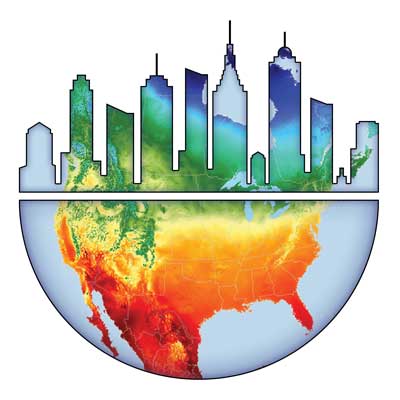Southeast Texas Urban Integrated Field Laboratory
Paola Passalacqua, University of Texas at Austin (Lead PI)
Participating Institutions:
- Lamar University
- Oak Ridge National Laboratory
- Prairie View A&M University
- Texas A&M University
- University of Texas–Austin
The Gulf Coast contains an extensive and diverse range of natural features and human settlements, with a disproportionate number of vulnerable communities. The region faces regular “acute-on-chronic” hazards in which short-notice technological and natural stressors (e.g., coastal storms, oil spills) occur alongside long-term chronic environmental, industrial, and social stressors (e.g., subsidence, population growth, toxic pollution). This region will serve as a bellwether of change, providing either successful or failed adaptation of these compounded and coupled crises. However, addressing these challenges requires scientific understanding in how the Earth system and the water cycle will change in the coming decades; how anthropogenic alterations will affect the water cycle and air pollution through urbanization and human migration, water infrastructure, and land cover change; and how community level green infrastructure intended to mitigate these stressors can in turn alter physical processes and the water cycle.
This UIFL has the goal of addressing the following questions: Which processes and variables need to be captured in regional scale hydrological and atmospheric models so that they are representative of the conditions experienced by local communities and help inform adaptation strategies? And how can researchers understand the linkages between and within natural, built, and social systems in urbanized regions to better support natural and human resilience?
The proposed region for the UIFL is Southeast Texas (SETx), specifically the Beaumont-Port Arthur region. This urban area represents the climate adaptation needs, population diversity and vulnerability, and ecological richness that characterize many urban centers along the Gulf Coast. Beaumont has experienced continued urban expansion and increased impervious cover over the past several decades; these changes have likely led to increased urban heat island effect and reduced capacity to absorb rainwater, exacerbating existing climate risk. In addition, the Beaumont, Port Arthur area is home to one of the nation’s largest petrochemical industrial complexes, which make it more vulnerable to climate-induced disasters capable of significant air toxics releases, in addition to chronic air toxic exposures that can raise the risk of cancer and other adverse health outcomes.
The long-term goals for SETx-IFL are to provide quantitative understanding of projected climate change impacts across SETx-IFL in a way that is generalizable to other regions and improve the practice of resilience science and community resilience through new and generalizable theories of change validated in SETx-IFL. To achieve these goals, SETx-IFL coordinates numerous disciplines, scholars, and community stakeholders toward the short-term goals of (1) integrating new data, methods, and models about the interactions among natural, human-built, and social systems; (2) increasing our understanding of interdependencies, mutual benefits, and trade-offs of different wellbeing outcomes for humans and the environment; (3) coproducing knowledge with stakeholders; and d) centering concepts of social equity in urbanized regions across spatial and temporal scales.

Beaumont, Texas. The Beaumont/Port Arthur region represents the climate adaptation needs, population diversity and vulnerability, and ecological richness that characterize many urban centers along the Gulf Coast.
Following the model of convergence principles, SETx-IFL is organized via three crosscutting themes, which are linked through data collection strategies and community engagement supported by a Knowledge Management Platform (KMP). Three Activity Areas (AAs) coordinate activities across the themes and KMP to ensure impacts are useful beyond the SETx-IFL. Broader Impacts of the SETx-IFL include: the codevelopment of climate scenarios with stakeholders; educational opportunities around convergence science in both formal and informal learning environments; citizen science and participatory research methods to codesign research projects and promote co-learning between residents and scholars; and broadened participation of underrepresented faculty and student groups in science and engineering to undertake community engagement in culturally and ethically appropriate ways.

